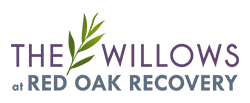Meth is highly addictive because it creates such a rush in the brain and body. As someone keeps using meth to feel energized and happy, they develop a tolerance and eventually become dependent on it.
If your loved one is using meth, they’re not alone. While the opioid epidemic seems to be declining, the dangers of meth seem to be surging. In 2024, fentanyl overdose deaths fell, but those involving meth rose. Recognizing the signs of meth use early can get them the help they need to break the cycle of addiction.
What are the physical signs of meth use?
Meth has serious (and often obvious) effects on the body. Some signs appear quickly, while others develop over time.
Rapid weight loss
Meth is a stimulant that suppresses appetite. People can lose weight quickly, loosening clothing and making them appear thin or sunken. Plus, extra energy means activity levels can rise during use, burning more calories as less food is eaten. They may seem weak, easily fatigued, and have trouble healing from minor injuries due to poor nutrition.
Dilated pupils and eye twitching
Someone’s eyes can give away meth use. Pupils look abnormally large even indoors, and involuntary eye movements or twitches may develop. Some people have trouble focusing their gaze or seem wide-eyed. These symptoms can continue during withdrawal and are visible during active use.
Odd sleep patterns
Meth disrupts sleep. People might stay awake for days or have trouble winding down. Alongside diminished hunger, these patterns can create dark circles under the eyes, irritability, and ongoing fatigue. Focus is harder to maintain, and energy levels swing from high to depleted.
Neglecting personal hygiene
Basic self-care like regular showers, clean clothes, hair grooming, and dental hygiene are often neglected. Changes may be gradual or sudden. Family and colleagues notice these shifts, which are often caused by prioritizing meth use over other responsibilities.
“Meth mouth” and dental problems
Meth causes dry mouth, which harbors bacteria that causes tooth and gum diseases. Cavities spread, gums recede, and teeth may even fall out. Poor dental care and cravings for sugary drinks or snacks add to the damage.
Are there behavioral signs of meth use?
Changes in behavior can disrupt daily life and relationships, especially in those attempting to hide meth use.
Mood swings and irritability
People using meth can go from energetic or excitable to frustrated or angry without warning. Fast talking, trouble sitting still, and anxiety are common symptoms. Arguments may increase. These swings often relate to cycles of intoxication and withdrawal.
Paranoia and hallucinations
Persistent meth use can lead to paranoia and, at times, hallucinations. During meth-induced psychosis, people may believe they are being followed or targeted or hear voices and feel sensations that aren’t real. These experiences can deepen isolation as trust in loved ones declines.
Financial difficulties
Substance use has a financial impact. Money disappears quickly, bills go unpaid, and valuable items may be sold. Frequent requests to borrow money or secretive new sources of funding are red flags.
Secretiveness and withdrawal from family
People with addiction become less open, leave home at odd times, or avoid social gatherings. Interests fade and relationships suffer. Some people form new friendships with others who use or enable substance use.
What are the psychological signs someone is on meth?
Mental health is greatly affected by ongoing meth use. Even after someone stops, they can have mental health symptoms that last for years.
Anxiety or restlessness
Many people who abuse stimulants like meth feel on edge or unable to relax. This might show as pacing, fidgeting, or abandoning tasks. Nervous energy can make it hard to sit still, interact comfortably, or concentrate at work or school.
Depression during withdrawal
After meth’s effects fade, people may become withdrawn, anxious, or deeply sad. Conversations dwindle. Activities that once brought satisfaction no longer interest them. These depressive periods often alternate with renewed drug use.
Compulsive drug-seeking
The urge to find and use meth dominates daily life. Work, school, and relationships fall by the wayside. Responsibilities are neglected. Even after someone realizes they’re putting things off to use meth, their cravings take over and become irresistible.
Why it’s so important to find help
Prolonged meth use has long-term consequences for both physical and mental health. Chronic use significantly increases the risk of infectious diseases, such as HIV and hepatitis C, due to risky behaviors like sharing needles. Meth use can also cause heart disease, stroke, and mental health issues like anxiety and depression.
If you notice the signs of meth addiction in someone you love, it’s time to take action. Approach the situation with compassion and empathy—they probably already feel bad about it. Be patient and offer support.
How Red Oak’s meth addiction treatment works
Red Oak Recovery knows that meth addiction is a complex disease that requires compassionate, evidence-based treatment. We offer drug rehab exclusively for men at our campus in the foothills of the Blue Ridge Mountains outside of Asheville, NC. With a hybrid program that combines wilderness therapy with proven clinical methods, dual diagnosis treatment, and relapse prevention, men at our center get comprehensive care for a better way forward.
There is help available, and we’re standing by now. Call 828.382.9699 or message us online now and find support.





